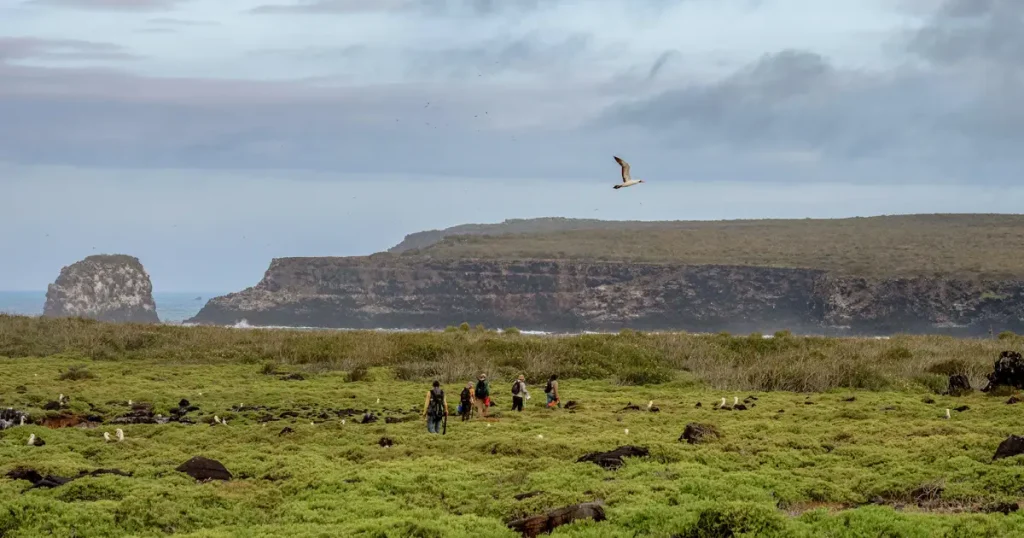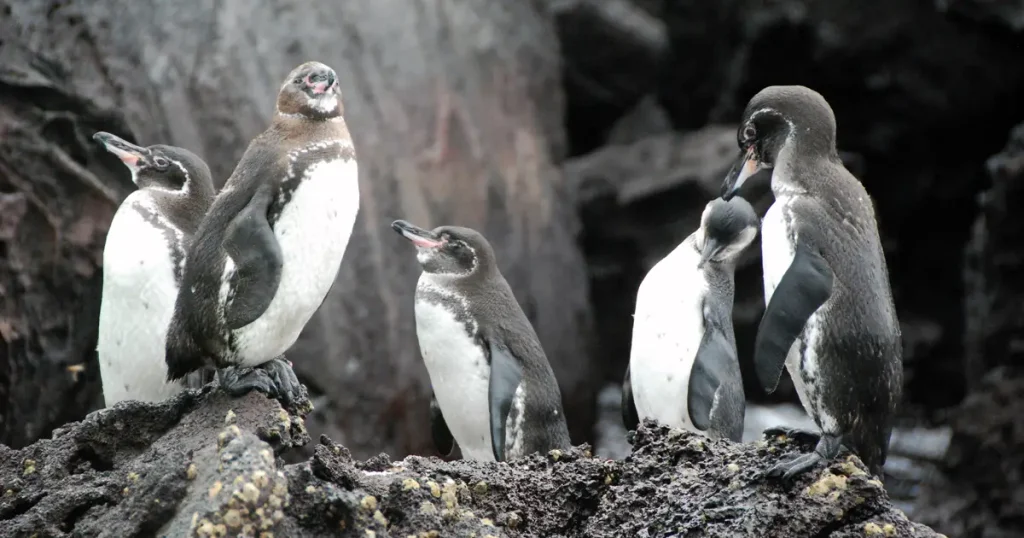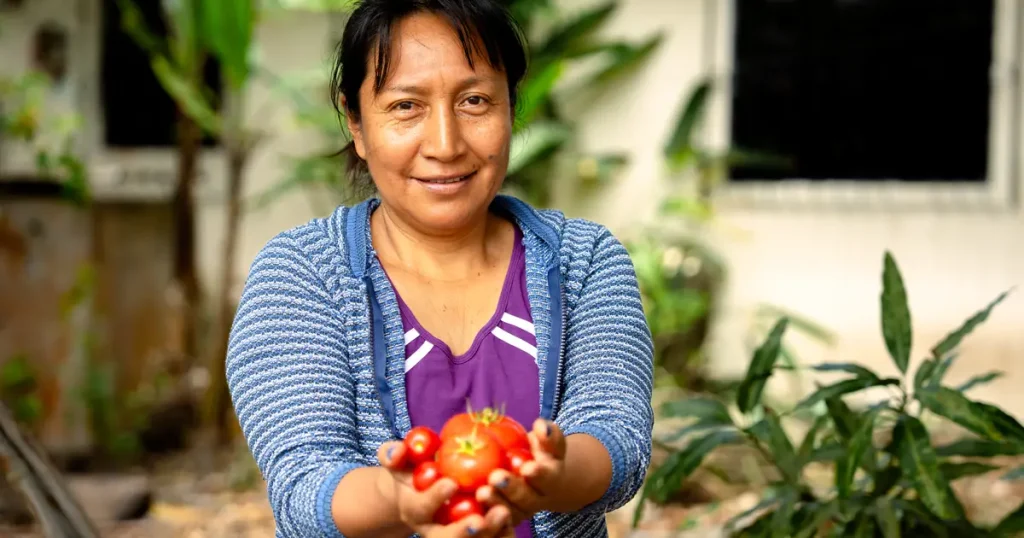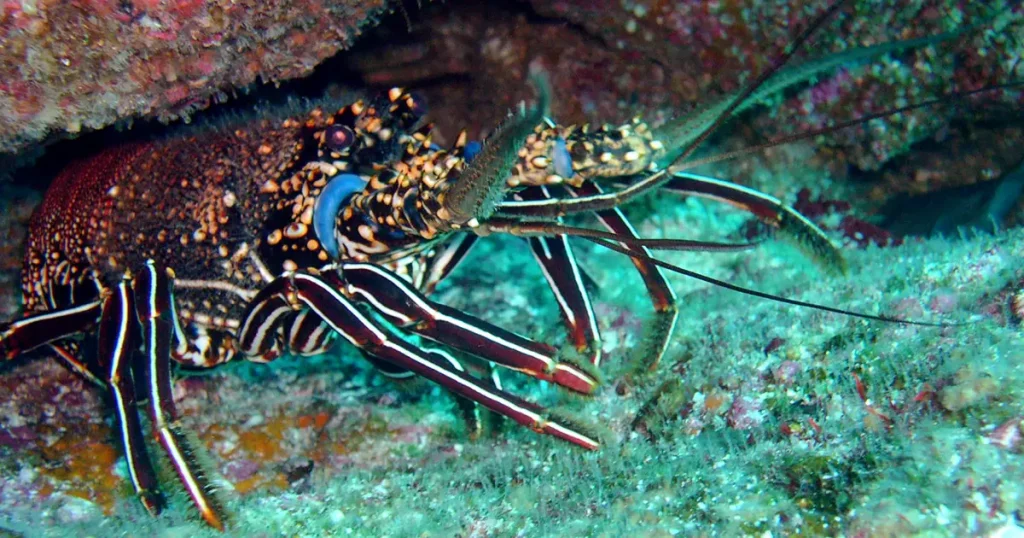Española: An Island Reborn Through Science and Human Commitment
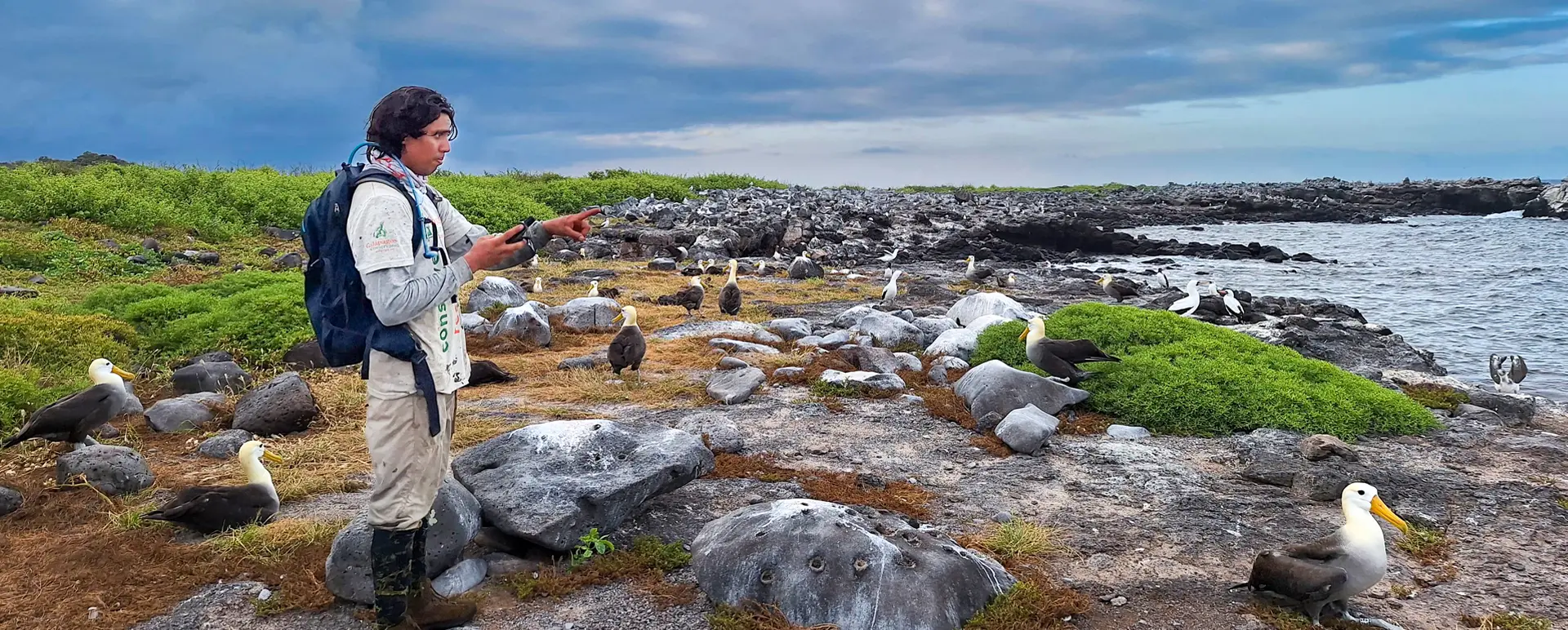
In early May, as the first Waved Albatrosses return to Española to nest, more than wings arrive on the island: so too do the hands that care for it. A team of young scientists from Galápagos Conservancy and rangers from the Galápagos National Park Directorate embark on a quiet but powerful mission: to protect life on one of Earth’s most fragile islands. Every step matters. They clear natural runways for albatrosses, monitor giant tortoises, and assess habitat health. But what they really do—thanks to science and human commitment—is something even deeper: they help sustain the island’s future.
When Janaí Yépez first set foot on Española in 2023, he carried a field notebook in his hand and a surge of emotion in his chest. A young member of Galápagos Conservancy’s conservation team, he knew this wasn’t just any visit; it was his first opportunity to apply the scientific knowledge he had learned on one of the archipelago’s most iconic islands. “That trip to one of the most wonderful places in the world was incredibly meaningful to me. I was so excited to contribute to protecting the species that live there,” he recalls.
Two years later, Janaí is not alone. Alongside 20 teammates—rangers and young scientists—he returns to Española on a new 10-day expedition. But this isn’t just a scientific mission; it’s a deeply human undertaking. It marks a new chapter in the restoration of an ecosystem that still depends on science, commitment, and decisive action to ensure its continued recovery.
An Ecosystem on the Brink
In the 1970s, Española faced a dire critical crisis: only 14 giant tortoises remained. Without these large herbivores to regulate plant growth, the island’s ecological dynamics began to shift. Woody vegetation spread uncontrollably, invaded open areas, and made it difficult for albatrosses to land and nest. As a result, Española was beginning to lose its ability to sustain its diverse ecosystem.
It was at that moment of ecological urgency that decisions were made—decisions that would change the future of the island. A group of scientists, technicians, and environmental authorities launched a pioneering captive breeding program on Santa Cruz with the last 14 known tortoises of the species.
Soon after, Diego, a male tortoise living at the San Diego Zoo, was identified as belonging to the same species. With his addition to the program, the founding group grew to 15: twelve females and three males.
Thanks to his remarkable reproductive success—with more than 800 offspring—Diego became a global symbol of hope. His story captured the world’s attention, but behind his fame were decades of quiet, strategic, and dedicated work.
In 2020, the 15 founding tortoises, including Diego, returned to Española. Today, with over 2,300 tortoises living freely and fulfilling their ecological role, this restoration is celebrated as one of the greatest conservation achievements on the planet.
Galápagos Conservancy has been part of this journey from the beginning—not only providing financial resources but also contributing something even more valuable: dedicated local experts who have committed their lives to protecting this unique ecosystem.

The Mission Continues, Step by Step

Today, that legacy continues with every step the conservation team takes on Española. For ten days, a group of 21 people—including young scientists, Galápagos Conservancy technicians, and park rangers—carry out a clear mission: to keep restoring one of the most delicate ecosystems on Earth.

“When you’re in the field and see how vegetation behaves, how species interact, how the ecosystem responds… you realize these trips are anything but symbolic,” says Dr. Jorge Carrión, Director of Conservation at Galápagos Conservancy. “They’re essential. They allow us to observe biodiversity in real time, understand what’s happening, and propose management actions based on solid science.”
This time of year, their work is especially critical. June marks the peak of the albatross nesting season, and the island must be ready. One of the team’s key tasks consists of manually clearing the natural runways these birds use to land and take off, ensuring they don’t get caught in the branches of native shrubs. Otherwise, dense shrubbery would impede the birds’ access.
This work, vital for the albatrosses’ reproductive success, is made possible in part thanks to support from the National Fish and Wildlife Foundation (NFWF), a strategic ally in restoring nesting habitat on Española. Through this collaboration, the conditions needed for these iconic birds to return and breed successfully are being strengthened.
The team also gathers crucial information about the island’s ecological dynamics: how plant cover changes, how species are distributed, and the overall state of the habitat. At the same time, they monitor giant tortoises reintroduced in previous years, tracking their adaptation, movement, and the marks they leave on the ecosystem.
“We didn’t come back for just one species. We’re here for Española and its entire biodiversity,” says Janaí with conviction. “Every expedition is a way to care for this unique ecological dynamic—with our hands, our eyes, and our hearts.”
Walter Chimborazo, a dedicated field technician deeply connected to Española, puts it simply: “To many, this may seem like just another expedition. But for us, each day on the island is part of something much greater. Every data point we collect, every path we clear, we do it knowing what’s at stake. Here, science and human commitment truly preserve life.”
Shoulder to Shoulder, for Life
To reach Española, the team sailed for hours, landed by sea, and hiked in carrying backpacks, tools, and a deep sense of purpose.
“It’s not easy, but we know why we do it,” says Walter. “Every time we clear a runway for an albatross to land, we know we’re helping life to continue.”
Fieldwork is demanding. Under the sun, on volcanic terrain, the team works side by side. These are young professionals with scientific training and a deep connection to the islands. They are the new faces of a decades-long restoration effort—new hands, and a stronger will.
If our conservation activities came to a halt, the result would be silence. Without constant monitoring, without active conservation, without committed human presence, Española could once again lose the ecological dynamics that sustain it. And with them, the life it now supports.

What’s at Stake
Today, Española is flourishing once again. The albatrosses continue to return. The tortoises roam free. But beyond the ecological indicators, something else is transforming: the very face of conservation.
“Coming back to Española after two years made me realize it’s not just about what we do here, but how we do it,” says Janaí. “What’s at stake is not just an island. It’s our relationship with nature. And every time I return, I’m more convinced that caring for it is part of caring for who we are.”
Walter echoes the sentiment: “Every space we clear, every bit of data we collect, we do it knowing what’s at stake.”

Like them, the rest of the team—young scientists from Galápagos Conservancy and park rangers—share a single truth: protecting Española is more than a job. It’s a calling. A commitment to future generations, to the life that inhabits these islands, and to the story that is still being written.
Española is no longer just an island in recovery. It is living proof of what science, perseverance, and human commitment can achieve.
Here, life thrives anew. Thanks to those who believe—and act—for a more vibrant future.
Share:
